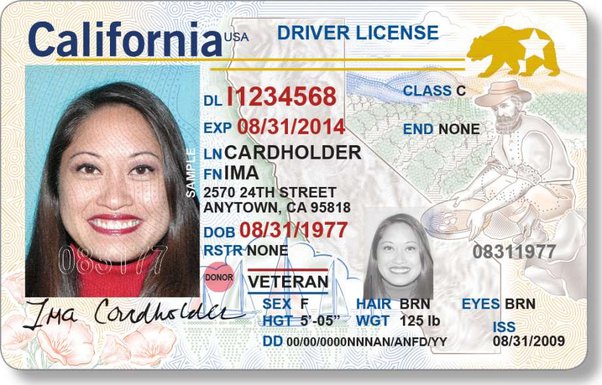Driving is a fundamental part of daily life in the United States, where vast distances and limited public transportation make personal vehicles the primary mode of travel for most people. But with this convenience comes legal responsibility. One of the most common questions for new drivers, immigrants, and visitors is: Is a driving license mandatory in the USA? The answer is unequivocally yes—if you want to operate a motor vehicle on public roads, a valid driver’s license is required. This article explores the legal, practical, and safety reasons behind this mandate, as well as the consequences of driving without a license and some rare exceptions.
Contents
Legal Requirement: The Foundation of Road Safety
Every state in the U.S., as well as the District of Columbia, requires drivers to hold a valid driver’s license to legally operate a motor vehicle on public roads. This requirement is not just a bureaucratic formality—it is a cornerstone of road safety and public accountability.
Why Is a Driver’s License Required?
-
Proof of Competence: A driver’s license certifies that the holder has demonstrated sufficient knowledge of traffic laws and the practical skills necessary to drive safely.
-
Identification: It serves as an official government-issued ID, widely accepted for everything from banking to boarding domestic flights.
-
Accountability: Licensing allows authorities to track driving records, enforce penalties for violations, and ensure that only qualified individuals are on the road.
Without a license, there is no assurance that a driver understands the rules of the road or can operate a vehicle safely.
Types of Driver’s Licenses in the USA
The U.S. offers several types of driver’s licenses, each tailored to specific vehicle types and uses:
-
Standard (Non-Commercial) Driver’s License: For operating personal vehicles such as cars, SUVs, and small trucks.
-
Commercial Driver’s License (CDL): Required for driving large vehicles (trucks, buses, vehicles transporting hazardous materials, etc.). CDLs have additional requirements and testing.
-
Motorcycle License or Endorsement: For operating motorcycles and similar vehicles.
-
Provisional or Learner’s Permits: For new drivers, typically teenagers, who are learning to drive under supervision.
Some states also issue special licenses or endorsements for vehicles like mopeds, farm equipment, or recreational vehicles.
Who Must Have a Driver’s License?
-
U.S. Citizens and Residents: Anyone operating a motor vehicle on public roads must have a valid driver’s license from their state of residence.
-
Non-Citizens and Immigrants: Non-citizens, including permanent residents, international students, and temporary workers, must also obtain a state-issued driver’s license if they intend to drive.
-
International Visitors: Most states allow visitors to drive with a valid license from their home country for a limited period (often 30–90 days), sometimes in conjunction with an International Driving Permit (IDP). However, once a visitor establishes residency, they are generally required to obtain a state license.
How to Obtain a Driver’s License
The process for obtaining a license varies by state but typically includes:
-
Proof of Identity and Residency: Applicants must provide documents that verify their identity, Social Security number, and state residency.
-
Written Knowledge Test: Covers traffic laws, road signs, and safe driving practices.
-
Vision Test: Ensures the applicant can see well enough to drive safely.
-
Road Skills Test: Demonstrates practical driving ability.
-
Fees: Applicants must pay a fee, which varies by state.
For minors, most states have a graduated licensing system, which includes a learner’s permit, supervised driving hours, and restrictions on nighttime driving and passengers.
Federal Standards: The REAL ID Act
The REAL ID Act, enacted in 2005, established minimum security standards for state-issued driver’s licenses and identification cards. To be accepted for federal purposes—such as boarding domestic flights or entering federal buildings—a license must be REAL ID-compliant. This means applicants must provide additional documentation to verify their identity and lawful status in the U.S.
Consequences of Driving Without a License
Driving without a valid license is a violation of state law and can result in serious penalties:
-
Fines: First-time offenders may face fines ranging from $100 to $1,500 or more, depending on the state.
-
Jail Time: Some states impose jail sentences for repeat offenders or for driving with a suspended or revoked license.
-
Vehicle Impoundment: Law enforcement may impound the vehicle, especially in cases of repeated violations.
-
Criminal Record: In many states, driving without a license is a misdemeanor, which can result in a permanent criminal record.
-
Increased Insurance Rates: Insurance companies may raise premiums or refuse coverage to unlicensed drivers.
-
Court Appearance: Offenders are often required to appear in court, especially if the offense is combined with other violations such as DUI or reckless driving.
Special Cases and Limited Exceptions
While a driver’s license is mandatory for public roads, there are a few exceptions:
-
Private Property: You may drive without a license on private property with the owner’s permission, provided you are not endangering others.
-
Farm Equipment: Some states allow unlicensed operation of certain farm vehicles on private land or rural roads.
-
Emergency Situations: In rare cases, such as a life-threatening emergency, law enforcement may exercise discretion if someone drives without a license to save a life or prevent harm. However, this is not a guaranteed legal defense.
Driving With a Suspended or Revoked License
Operating a vehicle with a suspended or revoked license is a more serious offense than simply never having obtained a license. Penalties are harsher and may include:
-
Higher fines and longer jail sentences
-
Extended suspension or revocation periods
-
Possible felony charges if the offense involves injury or death
Why a License Matters Beyond the Law
A driver’s license is more than just a legal requirement. It is a symbol of responsibility and trust. Licensed drivers are expected to know and follow the rules of the road, maintain insurance, and operate vehicles safely. Unlicensed drivers are statistically more likely to be involved in accidents and less likely to carry insurance, putting themselves and others at risk.
Conclusion
A driving license is absolutely mandatory for anyone wishing to operate a motor vehicle on public roads in the United States. This requirement is enforced by every state and backed by federal standards for identification and security. The only exceptions are limited to private property and a few specialized vehicles. Driving without a license is illegal and carries significant penalties, including fines, jail time, and a criminal record. For your safety, the safety of others, and to comply with the law, always ensure you have a valid driver’s license before getting behind the wheel in the USA.










